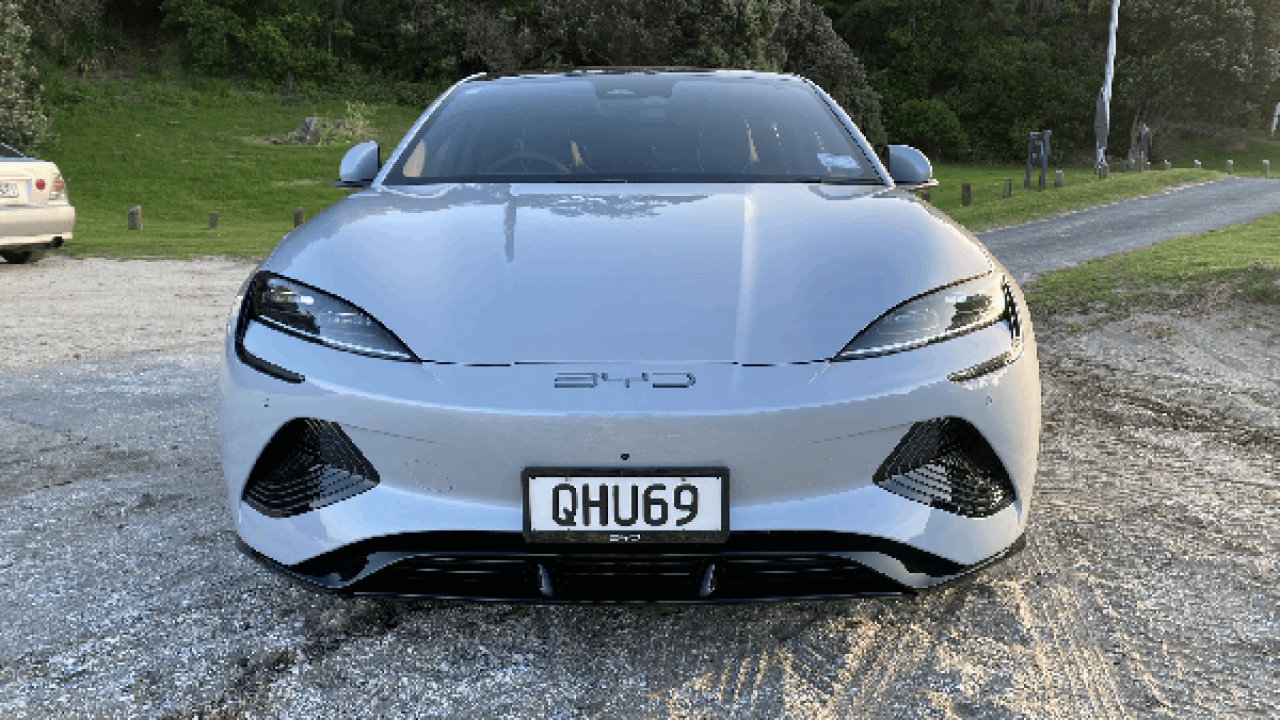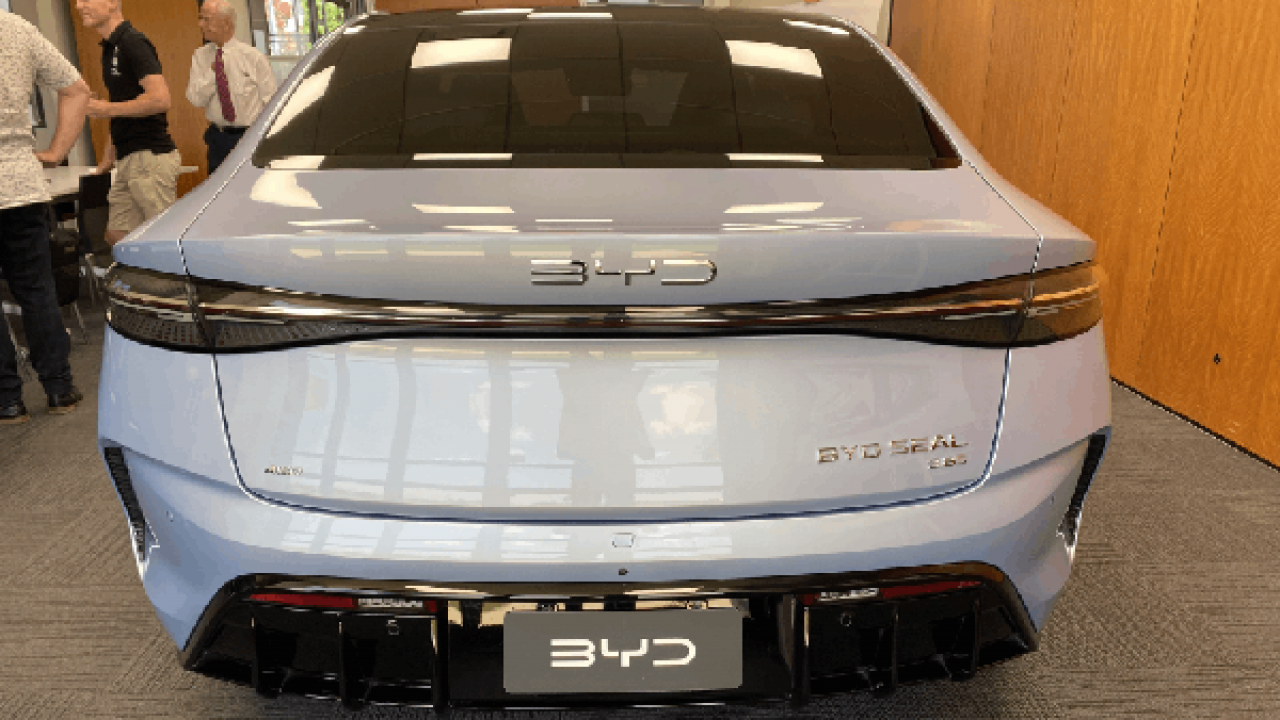To EV or not to EV? That is the question.
One moment you are rebelliously agnostic to the shifting sands, comfortable in your little corner of petroleum-fuelled utopia. You wear the blinkers of dominant logic and stand steadfast against the tidal wave of EV hyperbole.
And then a Seal comes along... This is no ordinary Seal. Like its aquatic namesake, it’s sleek, fast and very pleasing to the eye. This EV has all the right tech, great battery range and an interior that feels like a million bucks.
You are confused. This does not mesh with your world view. The matrix is glitching. An EV cannot be this good… can it?
The BYD Seal is the third vehicle launched in New Zealand from the Chinese manufacturer and undeniably shifts the playing field from stock EVs that offer efficient utility, to an engaging driver’s car that surprises and delights. BYD’s two previous EV entrants, the Atto 3 and Dolphin are well-designed, functional cars that represent excellent value for money. They have captured the early adopters en masse, and rightfully won global awards for style and tech.
But BYD’s Chief Designer, Wolfgang Egger (who already has Alfa and Lamborghini on his CV) has upped the ante to give us a masterstroke of aesthetic and engineering genius. The Seal forges new territory for the BYD badge and will likely engage a new generation of EV adopters. It might even serve as the new benchmark for electric vehicle excellence.
The media release from BYD tells us the Seal is a ‘medium-sized high-performance coupe,’ which is a bit confusing, as the Seal has a full set of doors. But technically, a four-door sedan can be classified as a coupe (especially if you live in France). It’s got something to do with the slope of the roofline. Some aficionados would call the Seal a fastback, but Kiwis generally see four doors and think ‘hmmm that’s a sedan’. Possibly, the ‘coupe’ moniker is a red herring (marine pun intended) to divert us from comparisons with that other EV sedan with a Tesla badge.
BYD is proud of the Seal’s new EV Platform 3.0 architecture and Cell-to-Body (CTB) technology. CTB has impressive battery safety benefits, including excellent functional performance even under double-sided crash test conditions.
The 3.0 architecture also elevates drive, braking and steering improvements through increased structural rigidity. BYD’s latest concept car, the ‘Ocean X’ is testing this new platform with a battery capable of 1,000km and state of the art charging capability (150km range from a five-minute charge). Check out the press release if you want to read more about this.
The Seal we tested was the Performance AWD. BYD has ingeniously stuck a 3.8S badge on the rear, denoting the vehicle’s ability to travel from 0-100km at hyper speed. Clever play BYD, now everyone will Google why you have this peculiar number on the back of an EV. Oh, it’s not the size of the engine, they discover – it means the car can destroy the pride of most V8 owners. Cue the current trend for lightning fast EVs and the inevitable videos of the Seal beating a Lamborghini in a drag race, available on a social platform near you.
The Seal’s driveability is exceptional and presents another compelling proposition to would-be EV buyers. The flagship model has dual motors delivering 390kW and 670Nm of power, making combustion engine cousins feel somewhat inadequate. Steering is responsive, direct and weighted well for most driving conditions. Suspension errs on the firm side, providing composed cornering. There are three drive modes, Normal, Sport and Eco, all easily adjustable on the fly and changing the car’s dynamics for different preferences.
All Seal models have Intelligent Torque Adaption Control (iTAC) which controls power adjustment and distribution through new dynamic electronic controls. In a nutshell, this elevates safety, comfort and handling via very smart tech.
If you are a fan of regenerative braking modes, the Seal only has one option, and you will need to navigate through touchscreen menus to find it. Sadly, there is no one-pedal driving mode; hopefully BYD adds this to future iterations. Also frustrating is the sign detection warning, albeit necessary for any manufacturer seeking a 5-Star ANCAP safety rating. Don’t worry, it can easily be switched off within seconds but will default back on each time you start the vehicle.
The interior is a cocoon of delight. From the quilted faux-leather seats to the crystal design shifter, the flat floor, the massive 15.6-inch rotating touchscreen or the multi-function heads up display. Everything about this cabin screams cool design and quality texture. Length is 4,800mm and wheelbase is 2,920mm providing ample legroom front and back. Cap it all off with a 12-speaker audio system (with subwoofer) and you have everything you could ever need from an automobile. Interior durability will be the key to keeping customers happy over time, but as it stands, the Seal interior feels opulent enough to rival luxury cars worth triple the price.
At 15.6-inches, the touchscreen dominates the dashboard and could be criticised for being too big. But screen-size creep appears to be alive and well across the EV universe. It’s not that much bigger than the 15.4-inch Tesla Model 3. But if anyone is winning the Oscar for size, look no further than the recently released Tesla Cybertruck. It beats them all with an 18.5-inch monstrosity. It’s like looking at a personal IMAX theatre in your car.
The Seal range for New Zealand consists of three models – Dynamic, Premium and Performance AWD. Thankfully Dynamic and Premium come in RWD, matching the trend started by Tesla and continued by MG in the MG4 line-up.
Dynamic: 61kWh battery, range 460km, 0-100km in 7.5 sec. $62,990 + ORC.
Premium: 82kWh battery, range 570km, 0-100km in 5.9 sec. $72,990 + ORC.
Performance AWD: 82kWh battery, range 520km, 0-100km in 3.8 sec. $83,990 + ORC.
(All ranges WLTP)
All models have a 5-Star ANCAP Safety rating.
So, what makes the BYD Seal so good? Well, I guess it’s a mix of head versus heart. What does the head want from an EV? Range, value, safety, warranty, intuitive features, positive customer experience, you get the picture. The Seal ticks these boxes with ease.
What does the heart want from any vehicle? Excitement, status, pride, lifestyle, aesthetics… a car that turns heads. That feeling when you look forward to finishing work so you can jump behind the wheel. The Seal brings these emotions to the party.
Yes, I know that all sounds a bit abstract, but it’s part of the deeper psychology that drives people to act in a certain way. Auto manufacturers spend billions trying to understand how these emotions influence consumer behaviour. It appears that BYD has accepted the challenge. Signed, Sealed and delivered a clear winner.
To EV or not to EV? If the answer is a Seal, sign me up.
Details: https://www.bydauto.co.nz/vehicles/seal
Article and images by Avon Bailey
Avon has spent three long decades doing everything there is to do in the car universe, from the car auction podium to wrenching on a race car team he has seen it all. He brings an open mind and a sharp pencil to give an honest review of anything with four wheels.








